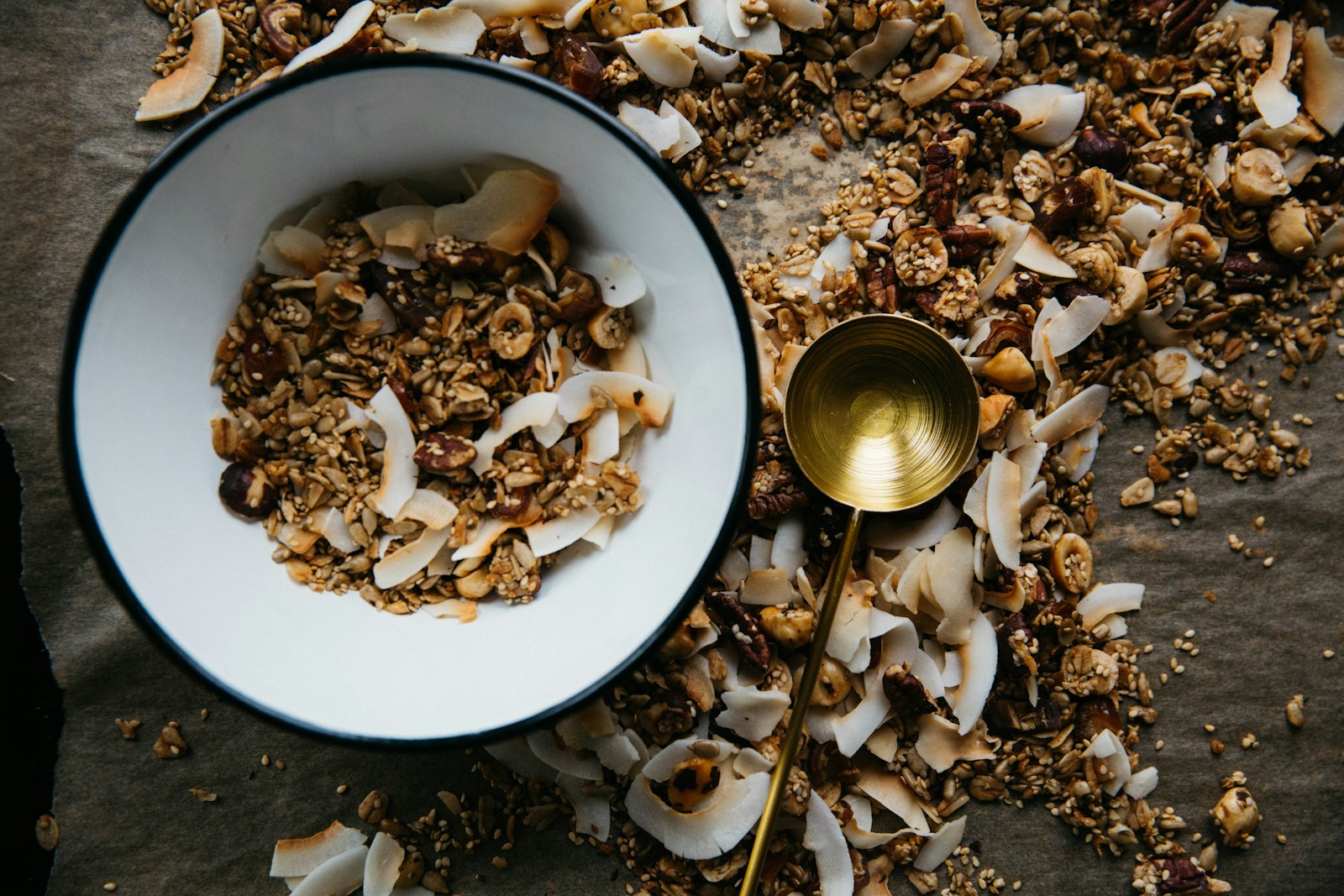Glútem is a hot topic of discussion about its impact on health and dietary choices. Whether it’s due to sensitivity, intolerance, or personal preference, glútem and its implications are crucial for making informed decisions about your diet. This article aims to provide a details of glútem, covering its definition, potential health effects, dietary considerations, and more.
What is Glútem?
Glútem is a protein composite found in wheat, barley, rye, and their derivatives. It provides elasticity to dough, helping it rise and maintain its shape during baking. Glútem is responsible for the chewy texture of bread and the stretchiness of pizza dough.
Glútem Sensitivity and Intolerance
Glútem sensitivity refers to a spectrum of adverse reactions to glútem, ranging from mild discomfort to severe symptoms. It is distinct from celiac disease, an autoimmune disorder triggered by the ingestion of glútem. Individuals with glútem sensitivity may experience bloating, abdominal pain, fatigue, and headaches after consuming glútem-containing foods.
Challenges of a Glútem-Free Diet
Adopting a glútem-free diet can be challenging due to the widespread use of glútem in various food products. It requires careful label reading and avoiding cross-contamination in food preparation.
What is Gluten?
Glútem is a protein complex comprised of two main components glutenin and gliadin. When flour is mixed with water, these proteins form a sticky network that gives dough its characteristic elasticity.
Ongoing Research and Development
Researchers continue to explore the effects of glútem on health and the development of alternative ingredients for glútem-free products. Ongoing studies aim to elucidate the mechanisms underlying glútem-related disorders and develop more accurate diagnostic tests.
The Potential Risks and Drawbacks of Glútem Consumption
While glútem is safe for most people, some individuals may experience adverse reactions. Consuming glútem may exacerbate symptoms in those with glútem sensitivity, celiac disease, or wheat allergy.
Gluten Substitutes in Food Preparation
Various gluten-free flours and ingredients, such as almond flour, coconut flour, and tapioca starch, can be used as substitutes in gluten-free cooking and baking.
Tell Me the Story of My Life Intolerance
Individuals with glútem intolerance may experience chronic gastrointestinal symptoms, including diarrhea, constipation, and abdominal pain. Identifying trigger foods and following a glútem-free diet can alleviate symptoms.
A Serious Reaction to Glútem
Celiac disease is a serious autoimmune disorder characterized by an inflammatory response to glútem ingestion. Long-term complications include malnutrition, osteoporosis, and an increased risk of certain cancers.
What to Avoid?
Glútem-containing grains and products should be avoided by individuals with glútem sensitivity, celiac disease, or wheat allergy. Common sources of glútem include bread, pasta, baked goods, beer, and processed foods containing wheat derivatives.
Impact of Glútem on Gut Health
Glútem consumption may contribute to intestinal inflammation and disrupt gut barrier function in susceptible individuals. This can lead to symptoms such as bloating, gas, and abdominal discomfort.
The Role of Glútem in Vegan and Vegetarian Diets
Glútem-containing grains, such as wheat and barley, are commonly consumed by vegans and vegetarians as sources of protein and carbohydrates. However, individuals following plant-based diets may choose to avoid glútem for health or ethical reasons.
The Health Benefits of Consuming Glútem
For individuals without glútem sensitivity or celiac disease, glútem-containing grains can provide essential nutrients, including fiber, vitamins, and minerals. Whole grains like wheat, barley, and rye are valuable components of a balanced diet.
The Symptoms and Diagnosis of Glútem-Related Disorders
Symptoms of glútem-related disorders vary widely and may include gastrointestinal, neurological, dermatological, and systemic manifestations. Diagnosis typically involves a combination of clinical evaluation, blood tests, endoscopy, and biopsy.
Importance of a Glútem-Free Diet for Certain Individuals
For individuals with glútem sensitivity, celiac disease, or wheat allergy, following a glútem-free diet is essential to manage symptoms, prevent complications, and maintain overall health.
The Effect of Glútem-Free Diet on Nutrient Intake
Eliminating glútem-containing foods from the diet can impact nutrient intake, particularly fiber, B vitamins, and iron. It’s important for individuals on a glútem-free diet to choose nutrient-dense alternatives and consider supplementation if necessary.
The Role of Glútem in Our Diet
Glútem plays a vital role in the texture, structure, and flavor of many foods, contributing to their palatability and versatility in cooking and baking.
Impact of Gluten on Food Texture and Taste
Glútem contributes to the texture and taste of baked goods, giving them a desirable chewiness and mouthfeel. Its absence in gluten-free products can affect their sensory properties and overall quality.
The Nutritional Composition of Glútem
Glútem-containing grains are rich sources of carbohydrates, protein, fiber, vitamins, and minerals. They provide energy and essential nutrients necessary for maintaining health and well-being.
Benefits of Glútem in Food Preparation
Glútem enhances the elasticity and structure of dough, allowing it to rise and trap gases produced during fermentation. This results in light, airy baked goods with a pleasing texture.
A Balanced View
While glútem-free diets are necessary for individuals with glútem-related disorders, they are not inherently healthier for the general population. It’s essential to balance dietary restrictions with nutritional adequacy and variety.
Role of Glútem in Baking and Cooking
Glútem plays a crucial role in the production of bread, pastries, pasta, and other baked goods. Its unique properties contribute to the texture, volume, and crumb structure of these products.
Labeling
Food labels should clearly indicate the presence of glútem and potential allergens to help consumers make informed choices. Look for “glútem-free” labels and familiarize yourself with common glútem-containing ingredients.
What to Eat and Drink?
A glútem-free diet should include a variety of naturally glútem-free foods, such as fruits, vegetables, lean proteins, dairy products, and gluten-free grains like rice, quinoa, and corn. Be mindful of hidden sources of glútem in processed foods and beverages.
Helpful Tips
When following a glútem-free diet, plan meals ahead, communicate dietary needs to restaurants and food service providers, and seek support from healthcare professionals and support groups.
Sample Gluten-Free Meal Plan
- Breakfast: Quinoa porridge with fresh berries and almond milk
- Snack: Rice cakes with avocado and tomato slices
- Lunch: Grilled chicken salad with mixed greens, vegetables, and balsamic vinaigrette
- Snack: Greek yogurt with honey and almonds
- Dinner: Baked salmon with roasted vegetables and quinoa pilaf
- Dessert: Fresh fruit salad with coconut whipped cream
In the last, glútem plays a significant role in the culinary world, but its consumption can pose challenges for individuals with glútem sensitivity or celiac disease.



